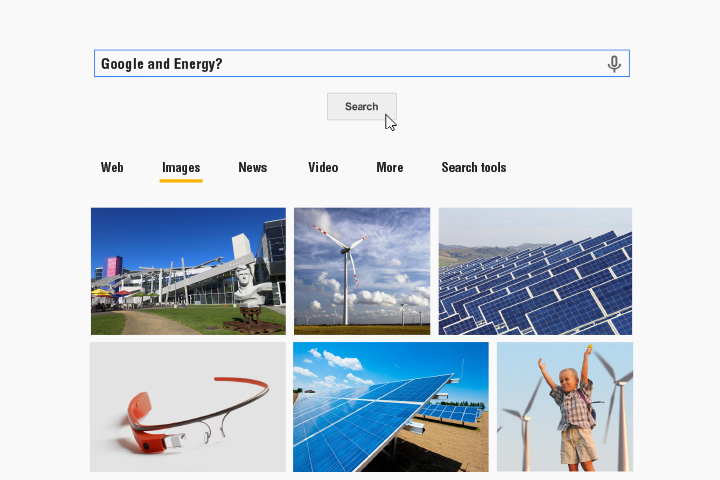by Tina Olivero
Published on June 16th, 2014
What Does Google Have to do with Energy?
Google is known the world over as an American company, which spans many nations and specializes in Internet-related products such as technologies in search, cloud computing, software, and online advertising. Most of Google’s profits come from AdWords, an entirely new online revenue-producing model of advertising.
Founders Larry Page and Sergey Brin, former students and PhD candidates at Stanford University, currently own about 16 per cent of Google shares, given that it went public in August 2004. In 2006, Google moved to their new headquarters in Mountain View, California, where this facility is well known as the GooglePlex.
Exponential growth since incorporation has triggered a chain of products, acquisitions, and partnerships that have broadened Google’s core competencies from search engine masters to an entire suite of productivity software for this business era. Today you can readily see their presence in the email system of Gmail, the office suite of products at Google Drive, and the social networking component known as Google+.
In December 2013, Alexa, an Amazon.com company, listed google.com as the most visited website in the world, and Google-owned sites, such as YouTube and Blogger, were also on the list of the top 100 sites in the world.
Google X
Google[x] is a semi-secret facility run by Google, and its purpose is to make fast ground-breaking technological advancements. Google[x] is located about a half mile from Google’s corporate headquarters and is overseen by co-founder Sergey Brin, along with the scientist, Astro Teller, who runs the day-to-day operations.
Teller says that they aim to improve technologies by a factor of ten and want to develop “science fiction sounding solutions.” The lab began in 2010 with the intention of revolutionizing our technologically advanced world – with technology itself.
Projects pertaining to future technologies include self-driving cars, augmented reality glasses, contact lenses that monitor a person’s glucose in tear drops, Internet service from space via balloons, neuro-networks for semi-supervised learning, speech recognition, and visual extraction from videos.
Google & Energy
In the world of energy, Google is taking some big leaps forward. In October 2013, the existence of four Google barges was revealed, under a secret company called By And Large. Two of the barges have a superstructure whose construction has been kept under the utmost secrecy, while speculations indicate they could be used as marketing for and stores for Google Glass.
On 23 May, 2013, Google[x] acquired Makani Power, a U.S. company that develops tethered wings/kites with mounted wind turbines for low-cost renewable energy generation.
Renewable Energy
In the game of renewable energy, Google has been making global gains. Google is striving to power the company with 100 per cent renewable energy, aiming to be a model company for the world. Not only do they see the business opportunities for renewable energy, but they continue to invest in accelerating its development, thereby creating a better future for all of us.
Commendable to their commitment, Google has focused their efforts on efficiency: buying clean energy and purchasing carbon offsets, which impressively brings down their carbon footprint to zero. Going beyond carbon neutral, Google has invested in clean energy, so it’s more accessible for their company and for everyone else. Google has committed over $1 billion to renewable energy projects, and, in doing so, they are giving tremendous support to our progress towards a clean energy future.
Did you enjoy this article?






 Marine Energy - Producing Electricity from Low Velocity Currents
Marine Energy - Producing Electricity from Low Velocity Currents Planet Earth’s Reserves
Planet Earth’s Reserves What’s in Your Pipeline?
What’s in Your Pipeline? The Global 100 Most Sustainable Corporations in the World
The Global 100 Most Sustainable Corporations in the World Masterful Collaboration: The World Bank, Masdar, Oil Companies and Others.
Masterful Collaboration: The World Bank, Masdar, Oil Companies and Others.
